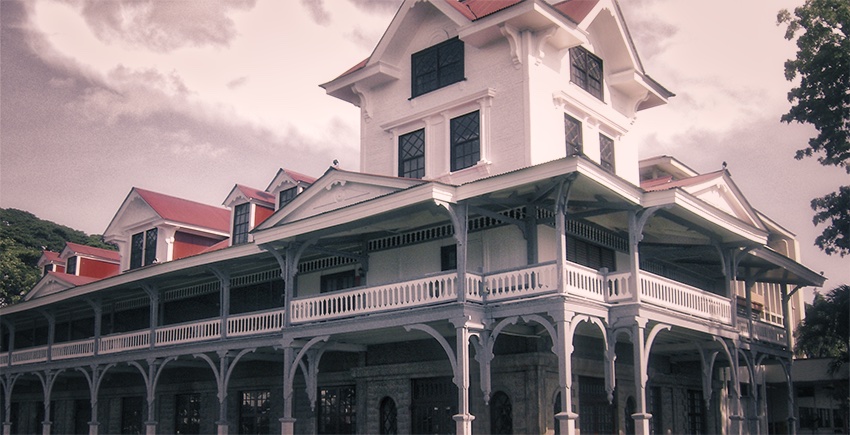
Understanding corruption
Understanding corruption
Tuesday, 28 June 2011 19:45 Liling Magtolis Briones / Boiled Green (Business Mirror)
Philippine presidents, including the incumbent, have won on anticorruption platforms. Since it has become practically synonymous with governance, Filipinos believe they know everything about corruption.
For its part, the international donor-community has poured in hundreds of millions of dollars in anti-corruption strategies. After decades of anticorruption efforts, there are no signs that it has abated.
The first step in fighting corruption is to understand its multidimensional character. There are several categories of corruption: market-centered, public office-centered and public interest-centered.
In this issue, I will touch on market-centered corruption because it is the most prevalent, and is so commonplace people hardly notice that they themselves are engaged in it.
Market-centered corruption
This definition of corruption leans heavily on economic concepts. Simply stated, corruption occurs when there is an undersupply of publicly funded goods and services that are supposed to be for all, and a heavy demand for such services. Obviously, when demand exceeds supply, the cost of these services goes up. Services that are usually given free but urgently needed can be obtained by paying for them. This is especially true of medical services, enrollment in public schools, rooms in hospitals, licenses, clearances and so on.
A Pinoy variant of market-centered corruption: the Divisoria model
So what is so Pinoy about the market-centered definition? It can be argued that it happens in all developing countries, anyway. The law of supply and demand works in all economies.
I have reflected on a variant of the market-centered definition that I describe as the “Divisoria model.” Divisoria is the largest market in the country, with goods ranging from the smallest button to food, groceries, clothing materials, gift items, animals and the largest machines. In Divisoria everything is negotiated and bargained for.
The poor Filipinos are not the only ones who go to Divisoria. All who are looking for a bargain and love to negotiate go to Divisoria. For the upper classes, it is considered chic to shop in Divisoria.
How the Divisoria model works
The Philippine public-administration system is like a huge Divisoria where public goods are bought and sold—from food to drugs, medical and hospital services, court decisions, licenses, clearances, admission to public schools, free housing, multibillion-peso infrastructure and, mostly likely, election returns. Because the demand for public goods and services is higher than the available supply, these have been turned into commodities for sale.
Now the Filipinos are incurable bargainers. They can’t accept “fixed prices,” especially penalties, fines and punishment already specified by law. The errant car driver negotiates with the policeman; the businessman with the tax assessor; the landowner with the agrarian-reform official; the accountant and budget officer with the auditor; and even the criminal with the judge or, horror of horrors, the justice himself; the voter with the politician; and the congressmen and senators with the president.
In the Divisoria model of public administration, everything has a price, but it is not a fixed price and must be negotiated. In such a situation, corruption is inevitable.
Did the son of a high-ranking official run over a child? Easy, just negotiate with the police officials! Did the Bureau of Internal Revenue assess a businessman for several millions? No problem, bring it down to a few hundred thousands! Is an importer slapped with a huge fine? Relax, just falsify the documents and share in the “savings!” Does a contractor need a sponsor or endorser for a huge project? No worry, get a politician or someone close to the head of the agency and negotiate the sharing!
In the Divisoria model, corruption is enhanced because of the drive to negotiate for lesser costs, lower penalties, bigger shares, more favors and more power. Thus, the universal market-driven model is exacerbated by the Pinoy bargain-driven culture.
Fighting market-centered corruption
Solutions to this type of corruption are so obvious, they don’t need sophisticated models, huge multimillion-dollar anticorruption projects and special programs. Since supply of public goods and services is the obvious problem, increased economy, efficiency and effectiveness in the delivery of more services is the clear response.
What we need are more schools, buildings, teachers, textbooks, health clinics and medicines, police protection. If the supply of public goods is sufficient, the public need not pay bribes and tips. Agencies that deliver their services in a fast and efficient manner tend to have lower levels of corruption. Yes, corruption can be reduced!
ABOUT THE AUTHOR :
Leonor Magtolis Briones
Accounting (1958);
Professor Briones is former National Treasurer of the Republic of the Philippines. She is an Outstanding Sillimanian in the field of Fiscal and Public Administration, and has served Silliman University as Chairperson of the Board of Trustees. She holds a Post-Graduate Diploma in Development Organization major in Public Enterprises and a Certificate in Policy for Public Enterprise from Leeds University in England and the Harvard Institute for International Development, respectively. Presently, she is professor at the National College of Public Administration and Governance at the University of the Philippines. Professor Briones maintains a regular column, “Boiled Green Bananas, ” in the Business Mirror.


